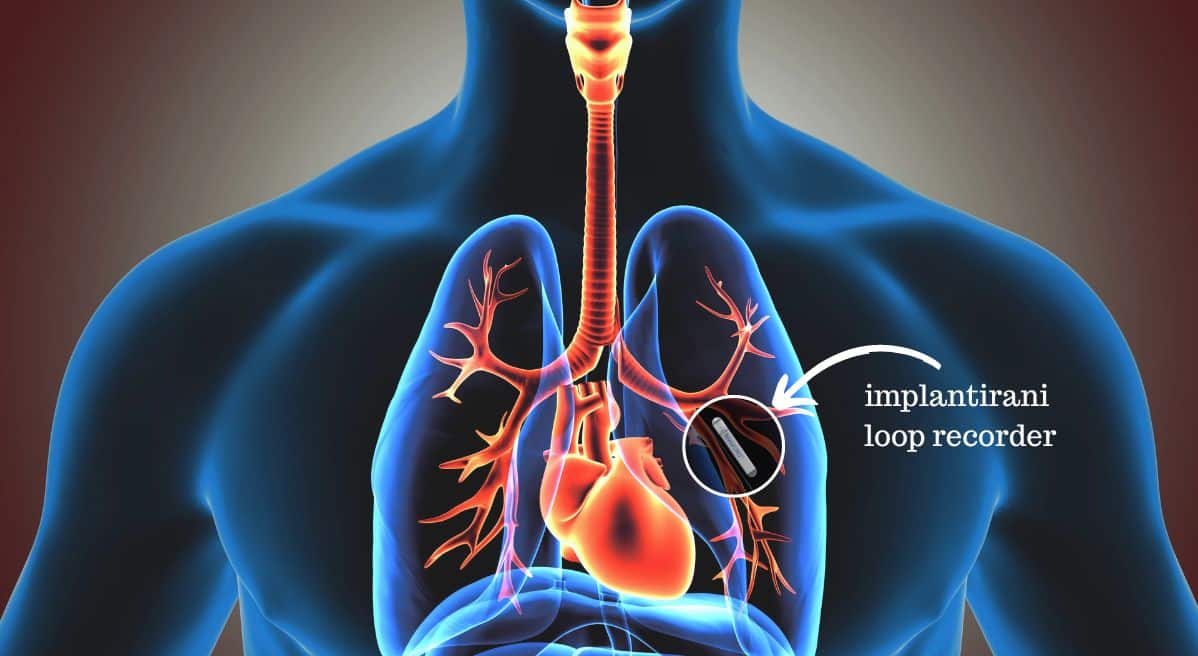Home » Services » Interventional procedures » Implantable loop recorder
Implantable loop recorder
Loop Recorder- a small device that detects the cause of unexplained fainting and heart palpitations.
An implantable loop recorder (ILR) is a small heart monitoring device that is implanted under the skin near the edge of the breastbone. It is used for differential diagnosis of recurrent episodes of fainting, or loss of consciousness, whose cause is not identified through standard multidisciplinary approaches. It can be worn for up to three years and depending on the detected cause further treatment may be recommended.
When is the implantation of a loop recorder necessary?
The implantable loop recorder continuously monitors the heart’s rhythm over a longer period of time. This means it can detect changes in heart rhythm that other heart monitoring devices may miss. For example it can detect:
- Irregular heartbeats that are brief or occur only occasionally
- Whether a fainting episode is due to a heart problem
- Irregular heart rhythms that can lead to a stroke
Some irregular heartbeats, such as atrial fibrillation, increase the risk of stroke. Information from the recordings can help doctors diagnose the problem and plan treatment.
The implantation of loop recorders is performed by the heart doctors at Puls Cardiology Center. Call us at +38111/7555-000 and schedule an appointment!
How is a heart loop recorder implanted?
The cardiologist first enters their information, as well as information about the institution where the loop recorder is being implanted and the patient’s information, into the device. After that, they clean the left edge of the breastbone, make a small incision, and use a very simple instrument to insert the loop recorder under the skin, under local anesthesia. The cardiologist then places adhesive bandages over the incision site, and there are no stitches needed. Then, they use an external device that connects to the subcutaneous recorder and reads the heart’s activity. The device records the heart’s activity for up to 3 years and operates through a GSM network, without the need for the internet. This means that the patient can travel wherever they want, and if they stay longer than 7 days, they carry the external device with them.
This method makes it possible to detect abnormal heart rhythms that can cause fainting. After diagnosing the cause of the fainting episode, the ILR is simply removed from under the skin, and further treatment is determined.

The preparation for the implementation of the loop recorder
The patient needs to talk to the doctor about what they need to do before the procedure. This primarily concerns medication therapy that the patient is taking. It should not be interrupted unless the doctor advises otherwise. It is necessary to avoid food and drink after an early dinner if the procedure is scheduled for the next morning. The patient will also receive detailed instructions from the doctor on this matter.
After the implementation of the loop recorder
After the procedure, the patient goes home. They can use painkillers if necessary. After a short rest period needed for the wound to heal, the patient can return to their regular activities. They receive detailed instructions on how to use the device before going home. They will likely have health checkups once or twice a year while wearing the device.

Complications after the implementation of the loop recorder
The complications of the procedure are rare. While the wound is healing, redness or swelling may occur, which quickly subsides. For this reason, physical activities should be limited until the wound heals.
The advantages of implementation a loop recorder
It detects the cause of syncope and irregular heartbeats that could not be detected by standard multidisciplinary approaches. The implantable loop recorder does not interfere with daily activities. There are no patches or wires, and no concerns about the device getting wet during bathing or swimming. The implantable loop recorder is considered safe for use during magnetic resonance imaging (MRI). However, metal detectors may react to the implantable loop recorder, for example, during airport security checks. The patient can receive an identification card for the device to carry in such situations.
